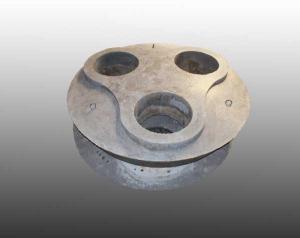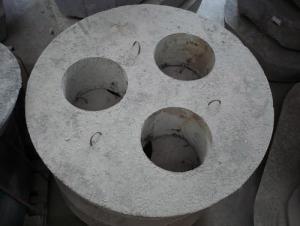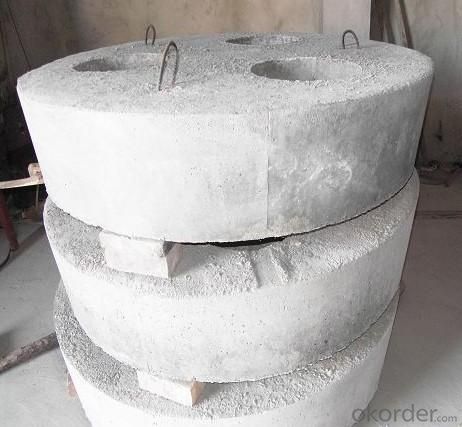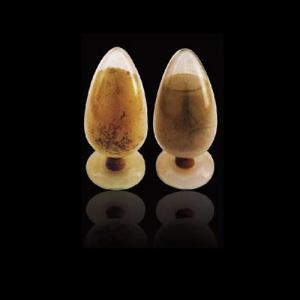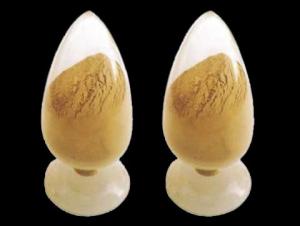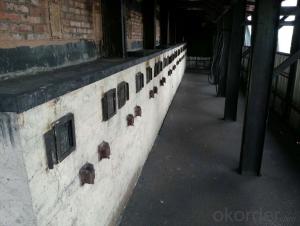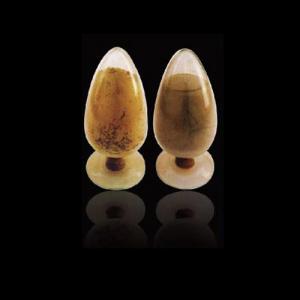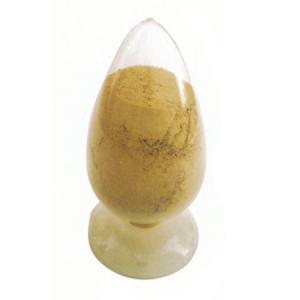Refractory Precast Shapes For EAF Roof
- Loading Port:
- China Main Port
- Payment Terms:
- TT or L/C
- Min Order Qty:
- 2 MT m.t.
- Supply Capability:
- 5000 Tons Per Month m.t./month
OKorder Service Pledge
OKorder Financial Service
You Might Also Like
General Information of Refractory Precast Shapes For EAF Roof
Made as per international standards, FIREF refractory pre-cast shapes for EAF roof is known for its excellent corrosion and scouring resistance of iron steel, long operating life and easy execution and mending. Further, the sizes could be customed.
Technical data of Refractory Precast Shapes For EAF Roof
Item | Refractory Precast Shapes For EAF Roof | |
Al2O3(%)≥ | 82 | |
MgO(%)≥ | — | |
CaO(%)≤ | 2 | |
SiO2(%)≤ | — | |
Fe2O3(%)≥ | — | |
Cr2O3 | — | |
Bulk Density (g/cm3)≥ | 110℃×24h | 2.9 |
1600℃×3h | — | |
C.C.S. (MPa)≥ | 110℃×24h | 30 |
1600℃×3h | — | |
M.O.R.(MPa)≥ | 110℃×24h | 6 |
1600℃×3h | — | |
Grain Size Distribution (%) | — | |
Heavy Burn Line Rate(1300℃×3h)(%) | — | |
Mould and Test Room of Refractory Precast Shapes For EAF Roof


Feature of Refractory Precast Shapes For EAF Roof
Excellent corrosion and scouring resistance of iron steel
Easy execution and mending
Application of Refractory Precast Shapes For EAF Roof
FIREF refractory pre-cast shapes for EAF roof can be used for in situ casting or pre-casting for tri-angle area of UHP EAF roof.
- Q: How do monolithic refractories withstand high temperatures and thermal cycling?
- Monolithic refractories are designed to withstand high temperatures and thermal cycling due to their unique composition and structural characteristics. Firstly, monolithic refractories are made from high-quality raw materials, such as alumina, silica, and magnesia, which have excellent thermal properties. These materials possess high melting points and low thermal conductivity, allowing them to retain their strength and integrity even at extreme temperatures. Moreover, monolithic refractories are typically engineered to have a dense and compact microstructure. This dense structure prevents the penetration of heat and gases, thus minimizing thermal shock and preventing the formation of cracks. Additionally, the compact microstructure enhances the refractory's thermal conductivity, enabling it to efficiently distribute and dissipate heat. Furthermore, monolithic refractories are often formulated with special additives and bonding agents that enhance their resistance to thermal cycling. These additives can improve the refractory's thermal expansion properties, allowing it to expand and contract without cracking or spalling during rapid temperature changes. Additionally, certain bonding agents can provide a degree of flexibility to the refractory, enabling it to accommodate thermal stresses without compromising its structural integrity. In addition to the inherent characteristics of monolithic refractories, proper installation techniques also play a crucial role in their ability to withstand high temperatures and thermal cycling. The refractory must be carefully applied and cured to ensure uniformity and minimize the formation of internal stresses. Adequate curing and heat treatment processes help to develop a strong and durable bond between the refractory and the substrate, enhancing its resistance to thermal shock and cyclic thermal loading. Overall, monolithic refractories are engineered to withstand high temperatures and thermal cycling through their composition, microstructure, and installation techniques. These factors work in synergy to provide the refractory with excellent thermal conductivity, resistance to thermal shock, and the ability to expand and contract without compromising its structural integrity.
- Q: What are the main factors affecting the corrosion resistance of monolithic refractories?
- The corrosion resistance of monolithic refractories is influenced by several key factors. Firstly, the chemical composition of the refractory material plays a significant role. Refractories with a high content of silica (SiO2) are generally more resistant to corrosion as silica has excellent resistance to acidic environments. On the other hand, refractories with a high alumina (Al2O3) content are more resistant to basic environments. Secondly, the microstructure of the refractory material is important. A dense and well-bonded microstructure provides better resistance to corrosion compared to materials with a porous structure. The presence of pores or cracks can allow corrosive substances to penetrate and attack the refractory, leading to its degradation. The temperature at which the refractory is exposed also affects its corrosion resistance. Higher temperatures can accelerate the corrosion process by promoting more aggressive chemical reactions. Moreover, thermal cycling, where the refractory is subjected to repeated heating and cooling, can create thermal stresses that can contribute to the degradation of the material. The type and concentration of corrosive agents present in the environment also impact the corrosion resistance of monolithic refractories. Different corrosive agents have varying degrees of reactivity with refractory materials. For example, acidic substances such as sulfuric acid or hydrochloric acid can cause significant corrosion, while alkaline substances like calcium oxide can lead to more gradual degradation. In addition, the mechanical stress applied to the refractory can influence its corrosion resistance. Mechanical vibrations, abrasion, or impact can weaken the refractory structure, making it more susceptible to corrosion. Finally, the manufacturing and installation process can affect the corrosion resistance of monolithic refractories. Factors such as proper mixing, curing, and drying techniques can contribute to the development of a more resistant refractory structure. In summary, the main factors affecting the corrosion resistance of monolithic refractories include the chemical composition, microstructure, temperature, presence of corrosive agents, mechanical stress, and manufacturing/installation processes. Understanding and managing these factors are crucial in selecting and maintaining the most suitable refractory material for a given application.
- Q: What are the advantages of using plastic refractories in the iron and steel industry?
- There are several advantages of using plastic refractories in the iron and steel industry. Firstly, plastic refractories offer excellent thermal insulation properties. They have low thermal conductivity, which means they can effectively retain heat and prevent excessive heat loss during the manufacturing process. This is crucial in the iron and steel industry as maintaining high temperatures is essential for the proper functioning of furnaces and other equipment. Secondly, plastic refractories have superior resistance to chemical attack and corrosion. They can withstand exposure to various chemicals, including molten metals and slag, without deteriorating or losing their structural integrity. This is especially important in the iron and steel industry, where materials come into contact with highly corrosive substances on a regular basis. Another advantage of plastic refractories is their ease of installation and repair. Unlike other refractory materials, plastic refractories can be easily shaped and molded into the desired form, allowing for precise fitting and quick installation. Additionally, they can be easily repaired or patched in case of damage or wear, which reduces downtime and maintenance costs. Furthermore, plastic refractories exhibit good mechanical strength and abrasion resistance. This enables them to withstand the physical stresses and mechanical forces present in the iron and steel industry, such as vibrations, impacts, and mechanical loading. Their high resistance to wear and tear ensures longevity and reduces the need for frequent replacements. Lastly, plastic refractories have a high thermal shock resistance. They can withstand rapid temperature changes without cracking or spalling. This is beneficial in the iron and steel industry, where materials are subjected to extreme temperature differentials, such as during the heating and cooling cycles of furnaces. In conclusion, the advantages of using plastic refractories in the iron and steel industry include excellent thermal insulation, resistance to chemical attack, ease of installation and repair, good mechanical strength, abrasion resistance, and high thermal shock resistance. These properties make plastic refractories an ideal choice for various applications in this industry, ensuring efficient and reliable operations.
- Q: What are the common failure mechanisms of monolithic refractories?
- Monolithic refractories commonly fail due to thermal spalling, chemical attack, erosion, and mechanical stress. Thermal spalling arises from abrupt temperature changes, causing the refractory material to crack and break. This can result from thermal shock or cyclic heating and cooling. Chemical attack occurs when aggressive chemicals or gases interact with the refractory material, degrading its lining. This can lead to the formation of new compounds or the dissolution of the refractory material, weakening its structure and reducing its resistance to further chemical attack. Erosion is another prevalent failure mechanism, particularly in scenarios where the refractory lining is exposed to high-speed gas or liquid flows. The abrasive action of the medium can gradually erode the refractory material, causing thinning and eventual failure of the lining. Mechanical stress, such as thermal expansion or contraction mismatch, can also lead to failure in monolithic refractories. Rapid temperature changes can result in differential expansion or contraction, leading to the development of cracks and fractures in the lining. To mitigate these failure mechanisms, several techniques can be utilized. These include careful material selection based on operating conditions, meticulous design to minimize thermal gradients, application of protective coatings, and regular inspection and maintenance to promptly detect and address signs of failure or degradation.
- Q: What are the different types of monolithic refractories used in the iron and steel industry?
- The iron and steel industry relies on various types of monolithic refractories for their exceptional thermal resistance, strength, and durability. These refractories are crucial in withstanding extreme temperatures and harsh conditions in a range of applications. Firstly, there are castables, which are precast refractory materials that form a slurry when mixed with water. This slurry is then poured or cast into molds. Castables are widely used in the iron and steel industry to line ladles, tundishes, and furnaces due to their high strength and resistance to thermal shock. Another type is ramming mass, which is used to line induction furnaces and melting units. It is composed of refractory aggregates, binders, and additives. Ramming mass is applied by ramming or tamping it into place, creating a dense lining capable of withstanding high temperatures and chemical attacks. Gunning mix is a refractory material applied using a pneumatic gunning machine. It is particularly useful for repairing or lining various areas of furnaces, especially during hot repairs. Gunning mix consists of refractory aggregates, binders, and additives that are sprayed onto the lining surface and then compacted. Plastic refractories, on the other hand, are mixtures of refractory aggregates and binders with high plasticity. They can be easily molded or shaped, making them ideal for repairing or patching refractory linings in the iron and steel industry. Plastic refractories are typically applied by hand or with a trowel and are suitable for both hot and cold applications. Lastly, refractory mortars are used for jointing or repairing refractory bricks or other monolithic refractories. They are composed of refractory powders, binders, and water. Mortars provide excellent adhesion between bricks or monolithic materials, ensuring a strong and durable lining in furnaces, ladles, and other high-temperature equipment. These various types of monolithic refractories are indispensable in the iron and steel industry. They provide reliable and long-lasting linings, ensuring efficient operations and minimizing downtime.
- Q: What are the recommended installation techniques for monolithic refractories?
- The recommended installation techniques for monolithic refractories typically involve proper surface preparation, mixing of refractory materials, and precise application. It is crucial to clean and remove any loose debris from the substrate before installation. The refractory materials should be mixed thoroughly with the appropriate water content to achieve the desired consistency. It is recommended to use vibration or tamping techniques during application to remove air pockets and ensure proper compaction. Careful curing and drying processes should be followed to prevent thermal shock and achieve optimal performance.
- Q: How do monolithic refractories perform in torpedo ladle applications?
- Monolithic refractories perform exceptionally well in torpedo ladle applications due to their high thermal shock resistance, excellent erosion and corrosion resistance, and superior mechanical strength. They can withstand the extreme temperatures and aggressive molten metal environment inside the torpedo ladle, ensuring long-lasting and reliable performance. Additionally, monolithic refractories offer ease of installation and maintenance, making them a preferred choice in torpedo ladle applications.
- Q: How do monolithic refractories contribute to the control of spalling in iron and steel processes?
- In controlling spalling in iron and steel processes, monolithic refractories play a vital role. Spalling, which is the breaking or flaking off of refractory material due to thermal stress, mechanical stress, or chemical reactions, can cause severe damage to furnace or kiln linings, decreasing efficiency and productivity. To tackle this issue, monolithic refractories are specifically designed to be more resistant to spalling compared to traditional brick or tile refractories. They consist of a single, uniform material that can withstand high temperatures and thermal shock, making them less prone to cracking or breaking in extreme conditions. The ability of monolithic refractories to control spalling in iron and steel processes primarily stems from their high thermal conductivity and low thermal expansion properties. These characteristics allow them to effectively distribute and absorb the intense heat generated during melting or heat treatment processes, reducing thermal stress on the refractory lining. Moreover, monolithic refractories offer improved resistance to chemical reactions and erosion caused by molten metal, slag, or gases present in iron and steel processes. They are formulated with additives and binders that enhance chemical stability and corrosion protection, minimizing the risk of spalling due to chemical attack. Furthermore, the monolithic nature of these refractories eliminates the need for joints or seams, common weak points in traditional brick or tile refractories. This seamless design ensures a more uniform and durable lining, reducing the likelihood of spalling occurring at these vulnerable areas. Overall, monolithic refractories significantly contribute to spalling control in iron and steel processes by providing superior thermal conductivity, low thermal expansion, chemical resistance, and a seamless lining. This helps maintain the integrity of the refractory lining, prolonging its lifespan and ensuring efficient and safe operation of furnaces or kilns.
- Q: How do monolithic refractories improve the durability of furnace linings?
- The durability of furnace linings is significantly enhanced by the unique characteristics and properties of monolithic refractories. Unlike traditional brick refractories, which are made up of individual bricks or tiles, monolithic refractories consist of a single, homogeneous structure. A key advantage of monolithic refractories is their ability to eliminate joints and seams, which are weak points in traditional brick refractories. These joints can lead to cracks and failures due to thermal expansion and contraction. In contrast, monolithic refractories are poured or gunned into place, creating a seamless lining that minimizes the potential for cracks. This seamless structure increases the durability of the lining and reduces its susceptibility to thermal stress. In addition, monolithic refractories exhibit excellent thermal shock resistance, which is crucial for furnace linings that experience rapid and extreme temperature changes. The monolithic structure allows for better heat transfer and distribution, preventing localized hotspots that can cause thermal shock and lining failure. This enhanced thermal shock resistance enables the furnace lining to withstand repeated heating and cooling cycles without significant damage, thus improving its overall durability. Furthermore, monolithic refractories offer superior resistance to erosion and corrosion. Furnace linings are often exposed to harsh chemicals, molten metals, and abrasive materials, which can cause erosion and corrosion over time. Monolithic refractories are specifically designed to resist these corrosive agents, protecting the lining from chemical attacks and physical wear. This resistance ensures a longer lifespan for the furnace lining and reduces the need for frequent repairs or replacements. Moreover, monolithic refractories possess better insulation properties compared to traditional brick refractories. They have lower thermal conductivity, meaning that heat transfer through the lining is minimized. This insulation property helps to maintain a more stable and uniform temperature within the furnace, reducing thermal stress on the lining and contributing to its longevity. To summarize, monolithic refractories enhance the durability of furnace linings by eliminating joints and seams, improving thermal shock resistance, providing erosion and corrosion resistance, and offering superior insulation properties. These materials are specifically engineered to withstand the extreme conditions inside furnaces, ensuring a longer lifespan for the lining and reducing maintenance costs in the long term.
- Q: How do monolithic refractories withstand the thermal cycling in aluminum smelting applications?
- Monolithic refractories are specifically designed to withstand the extreme thermal cycling conditions encountered in aluminum smelting applications. The unique properties of these refractories allow them to endure the rapid and repetitive heating and cooling cycles without significant damage or failure. One key feature of monolithic refractories is their excellent thermal shock resistance. This property enables them to withstand sudden temperature changes without cracking or spalling. During the aluminum smelting process, the refractories are exposed to extreme temperatures when molten aluminum is poured into the molds or when the molten metal comes in contact with the refractory lining. The refractories must be able to absorb and dissipate the heat rapidly to prevent thermal shock damage. Another important characteristic of monolithic refractories is their high thermal conductivity. This property facilitates the efficient transfer of heat away from the refractory lining, reducing the risk of thermal stress and thermal fatigue. The refractories can effectively disperse the heat generated during the smelting process, minimizing the temperature differentials within the lining and preventing cracks or fractures. Furthermore, monolithic refractories possess good chemical resistance, which is crucial in aluminum smelting applications. They are formulated to resist the corrosive effects of molten aluminum and other chemicals present in the smelting process. This resistance helps to maintain the integrity of the refractory lining and prolong its service life. Additionally, monolithic refractories are often reinforced with fibers or other structural materials to enhance their mechanical strength and durability. These reinforcements provide added resistance against mechanical stresses, such as thermal expansion and contraction, which occur during the thermal cycling process. In conclusion, monolithic refractories are designed to withstand the thermal cycling conditions encountered in aluminum smelting applications. Their excellent thermal shock resistance, high thermal conductivity, good chemical resistance, and mechanical strength allow them to endure the extreme temperature fluctuations without significant damage. These refractories play a crucial role in maintaining the integrity and efficiency of the smelting process in the aluminum industry.
1. Manufacturer Overview
| Location | Henan, China |
| Year Established | 2007 |
| Annual Output Value | Above US$ 60 Million |
| Main Markets | Mid East; Eastern Europe; North America |
| Company Certifications | ISO 9001:2008 |
2. Manufacturer Certificates
| a) Certification Name | |
| Range | |
| Reference | |
| Validity Period |
3. Manufacturer Capability
| a) Trade Capacity | |
| Nearest Port | Tianjin |
| Export Percentage | 31% - 50% |
| No.of Employees in Trade Department | 21-50 People |
| Language Spoken: | English; Chinese |
| b) Factory Information | |
| Factory Size: | Above 36,000 square meters |
| No. of Production Lines | Above 5 |
| Contract Manufacturing | OEM Service Offered |
| Product Price Range | Average |
Send your message to us
Refractory Precast Shapes For EAF Roof
- Loading Port:
- China Main Port
- Payment Terms:
- TT or L/C
- Min Order Qty:
- 2 MT m.t.
- Supply Capability:
- 5000 Tons Per Month m.t./month
OKorder Service Pledge
OKorder Financial Service
Similar products
Hot products
Hot Searches
Related keywords
